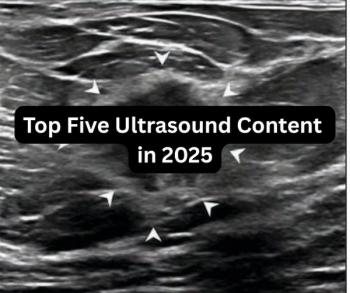
Radiotracer Identifies Metastatic Prostate Cancer Regardless of Anatomic Region
Recently approved PMSA-targeted radiotracer can pinpoint biochemical recurrent prostate cancer in men with unhelpful standard imaging.
Radiotracer 18F-DCFPyL, used with PET imaging, can detect and localize recurrent prostate cancer, according to new research results.
In a phase III clinical trial, this radiotracer was able to bind selectively to prostate-specific membrane antigen (PMSA) with high affinity and identify metastatic lesions no matter the anatomic region with high positive predictive value (PPV), further indicating that PMSA-targeted radiotracers are useful in prostate cancer imaging. 18F-DCFPyL was approved by the U.S. Food & Drug Administration in May, and the trial outcomes were presented during the Society of Nuclear Medicine and Molecular Imaging 2021 Annual Meeting.
For more SNMMI 2021 coverage, click
In a 14-site prospective study across the United States and Canada, researchers from Johns Hopkins University examined both the PPV and detection rate of PET/CT with the radiotracer by anatomic region –specifically prostate/prostate bed, pelvic lymph nodes, and regions outside the pelvis. For the study, they included men with rising prostate-specific antigen (PSA) levels post-local therapy and negative or equivocal conventional imaging results.
For the study, the team, led by Steven Rowe, M.D., Ph.D., associate professor of radiology and radiological science, imaged patients with 18F-DCFPyL at the start of the study and, again, after 60 days to verify suspected lesions using a composite “standard of truth” that included histopathology, correlative imaging findings, and PSA response. They, then, compared the radiotracer imaging to the “standard” to determine the PPV and detection rate.
Based on their analysis, the team determined 18F-DCFPyL-PET/CT effectively detected and pinpointed metastatic lesions with high PPV no matter the location for men who had biochemically recurrent prostate cancer and standard imaging that was uninformative.
Specifically, the median detection rates for prostate and prostate bed, lymph nodes, and extra-pelvic region were 20.2 percent, 35.1 percent, and 26.4 percent, respectively. In addition, the median PPV for the anatomic regions was 79.5 percent, 70.9 percent, and 67.4 percent, respectively. The extra-pelvic lymph node and bone PPVs compared to soft tissue regions, the team said.
With these results – and with these agents becoming more widely available -- Rowe said, patients who have newly diagnosed, recurrent, metastatic prostate cancer could soon have additional therapy options.
For more coverage based on industry expert insights and research, subscribe to the Diagnostic Imaging e-Newsletter
Newsletter
Stay at the forefront of radiology with the Diagnostic Imaging newsletter, delivering the latest news, clinical insights, and imaging advancements for today’s radiologists.




























